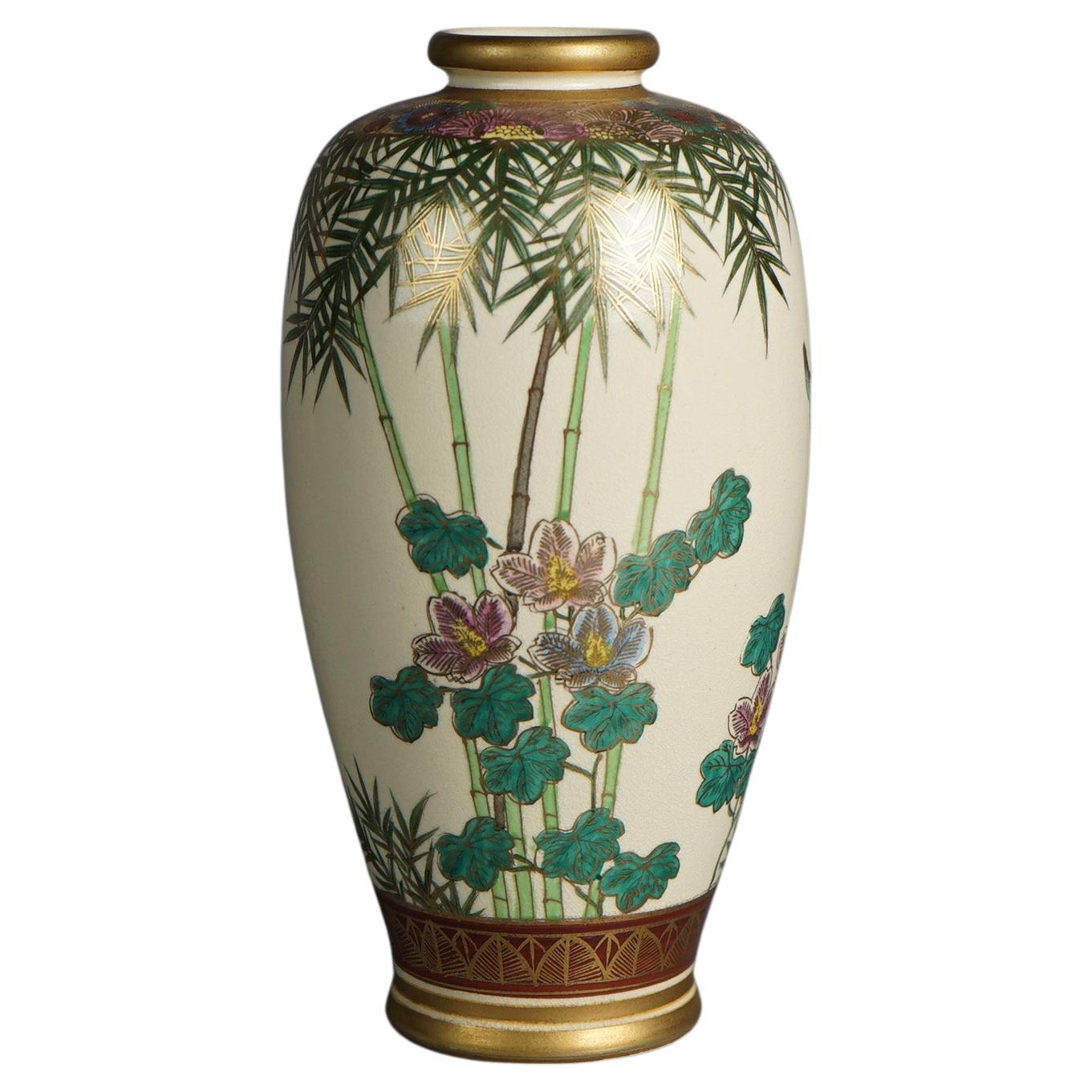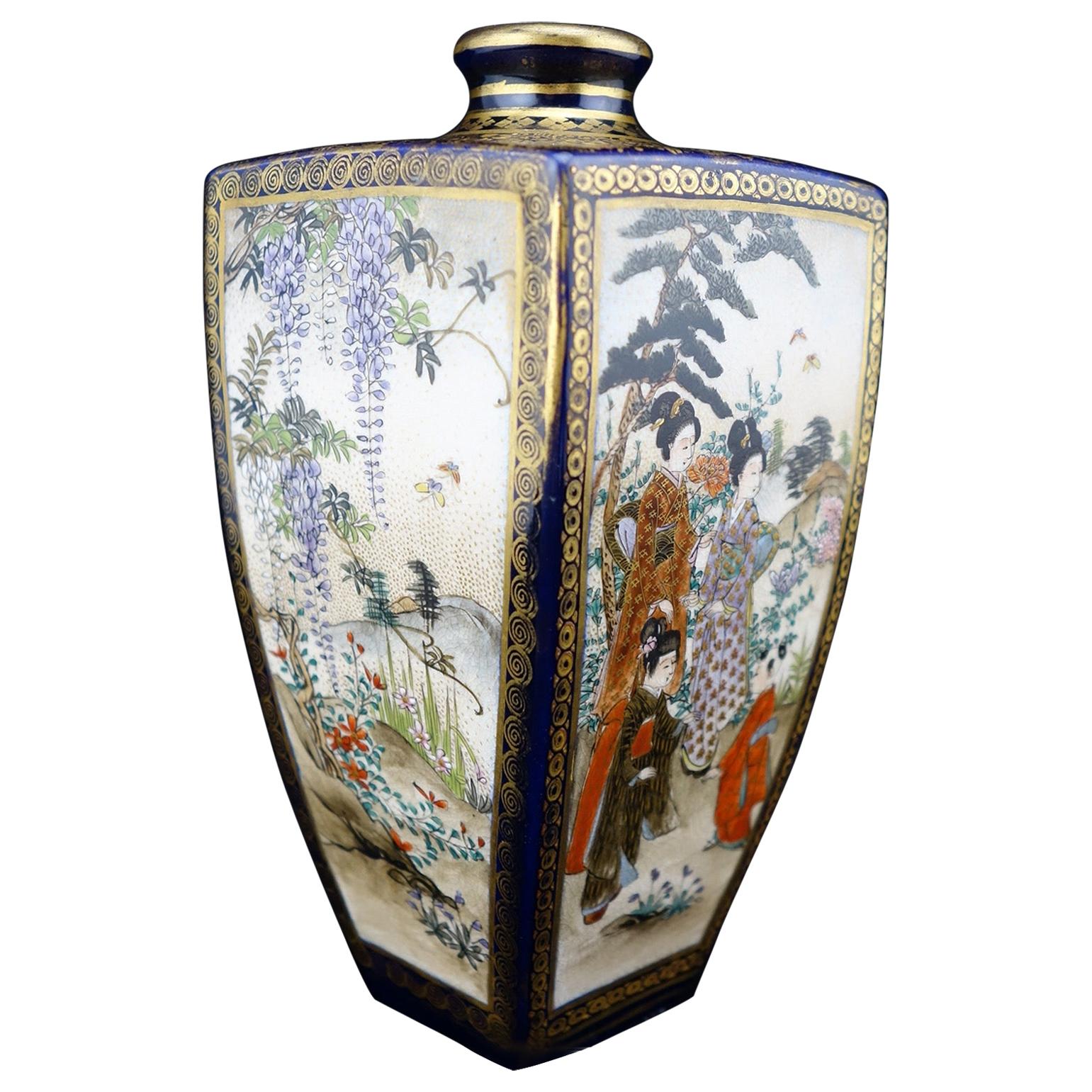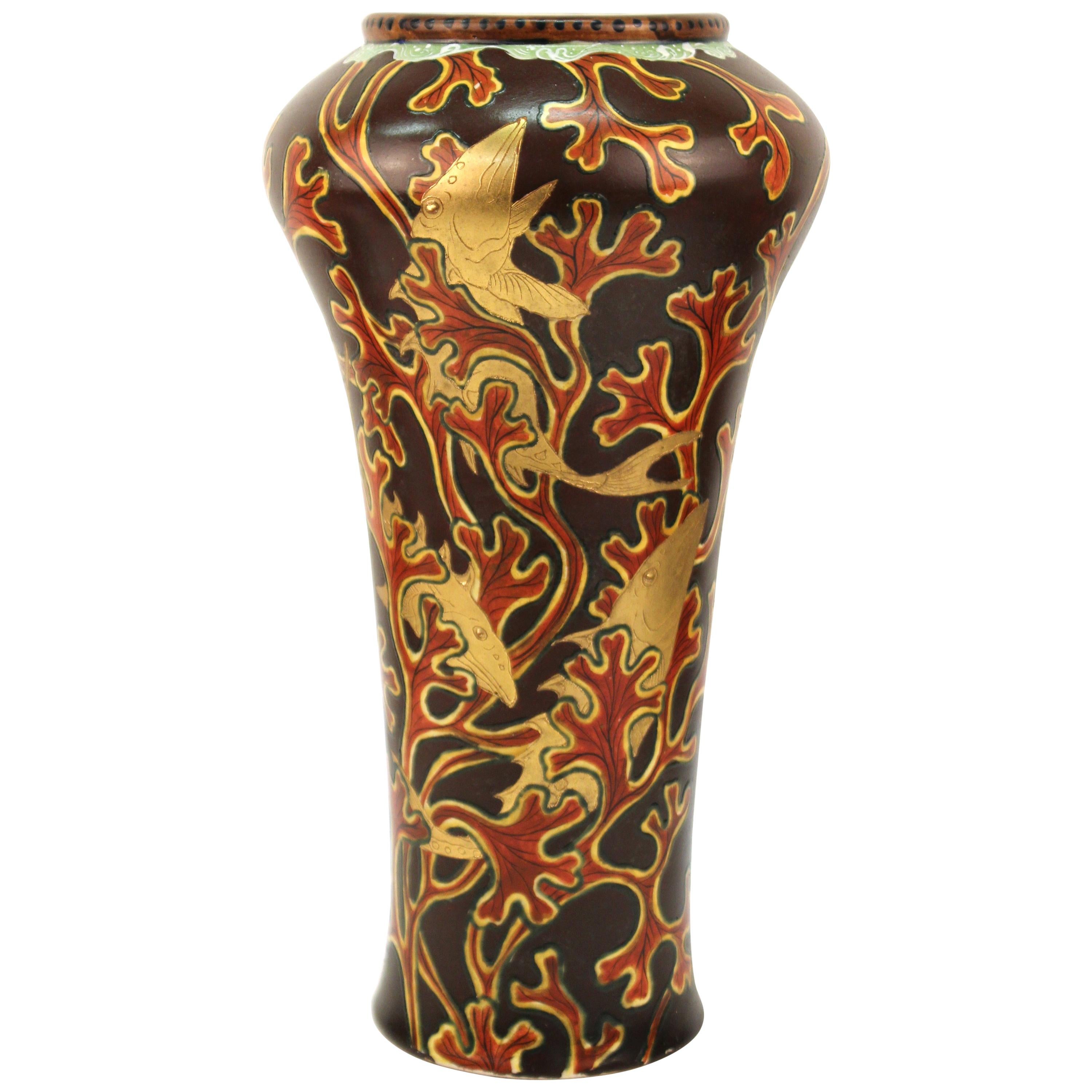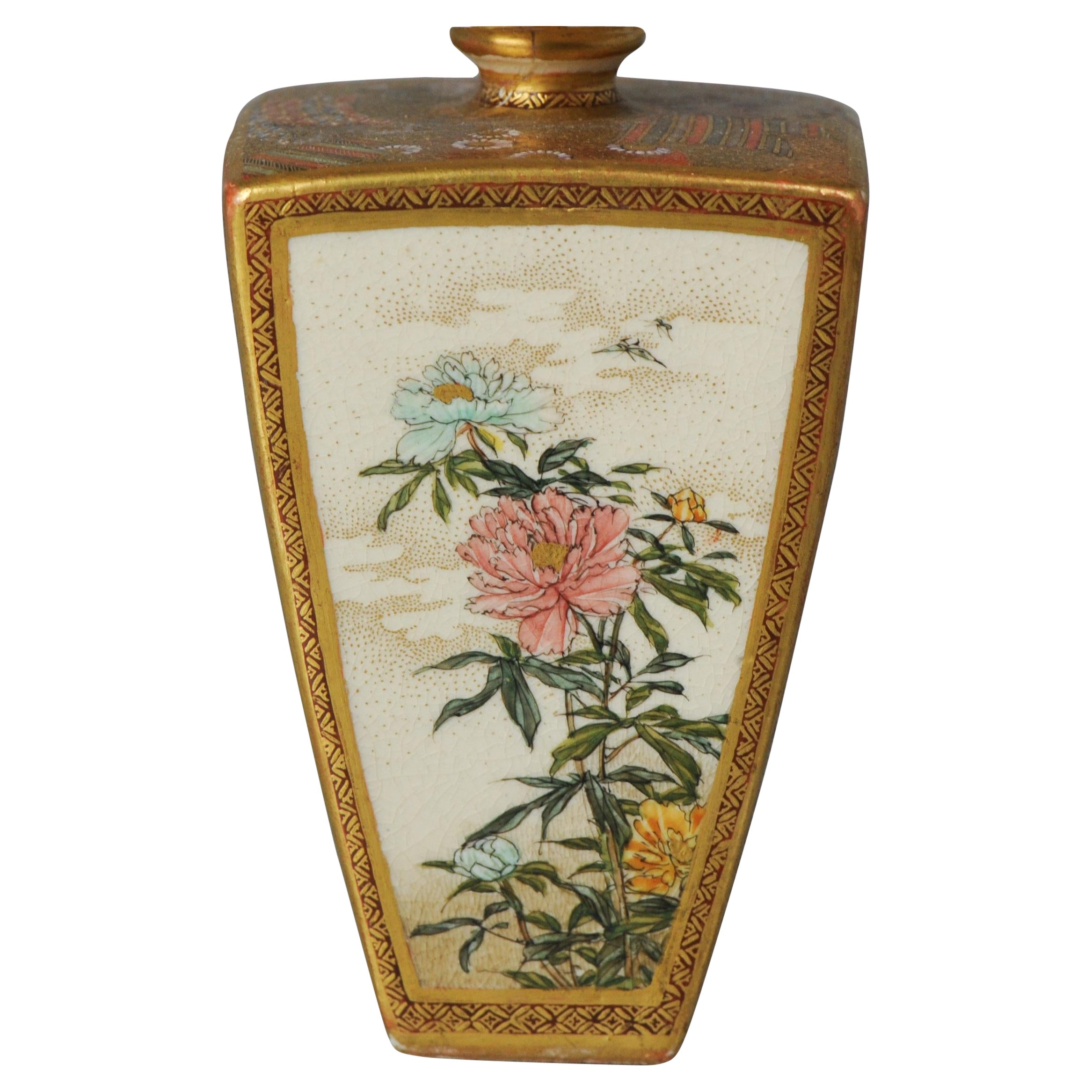Items Similar to Antique Japanese Meiji Satsuma Gilt Porcelain Vase with Pagoda & Mt Fugi C1910
Want more images or videos?
Request additional images or videos from the seller
1 of 5
Antique Japanese Meiji Satsuma Gilt Porcelain Vase with Pagoda & Mt Fugi C1910
About the Item
Antique Japanese Meiji Satsuma Gilt Porcelain Vase with Pagoda & Mt Fugi, Signed, C1910
Measures- 7.25''H x 3.5''W x 3.5''D
- Dimensions:Height: 7.25 in (18.42 cm)Width: 3.5 in (8.89 cm)Depth: 3.5 in (8.89 cm)
- Style:Meiji (In the Style Of)
- Materials and Techniques:
- Place of Origin:
- Period:
- Date of Manufacture:Circa 1910
- Condition:Wear consistent with age and use. Overall very good condition with minor finish scuffs crazing; as photographed.
- Seller Location:Big Flats, NY
- Reference Number:
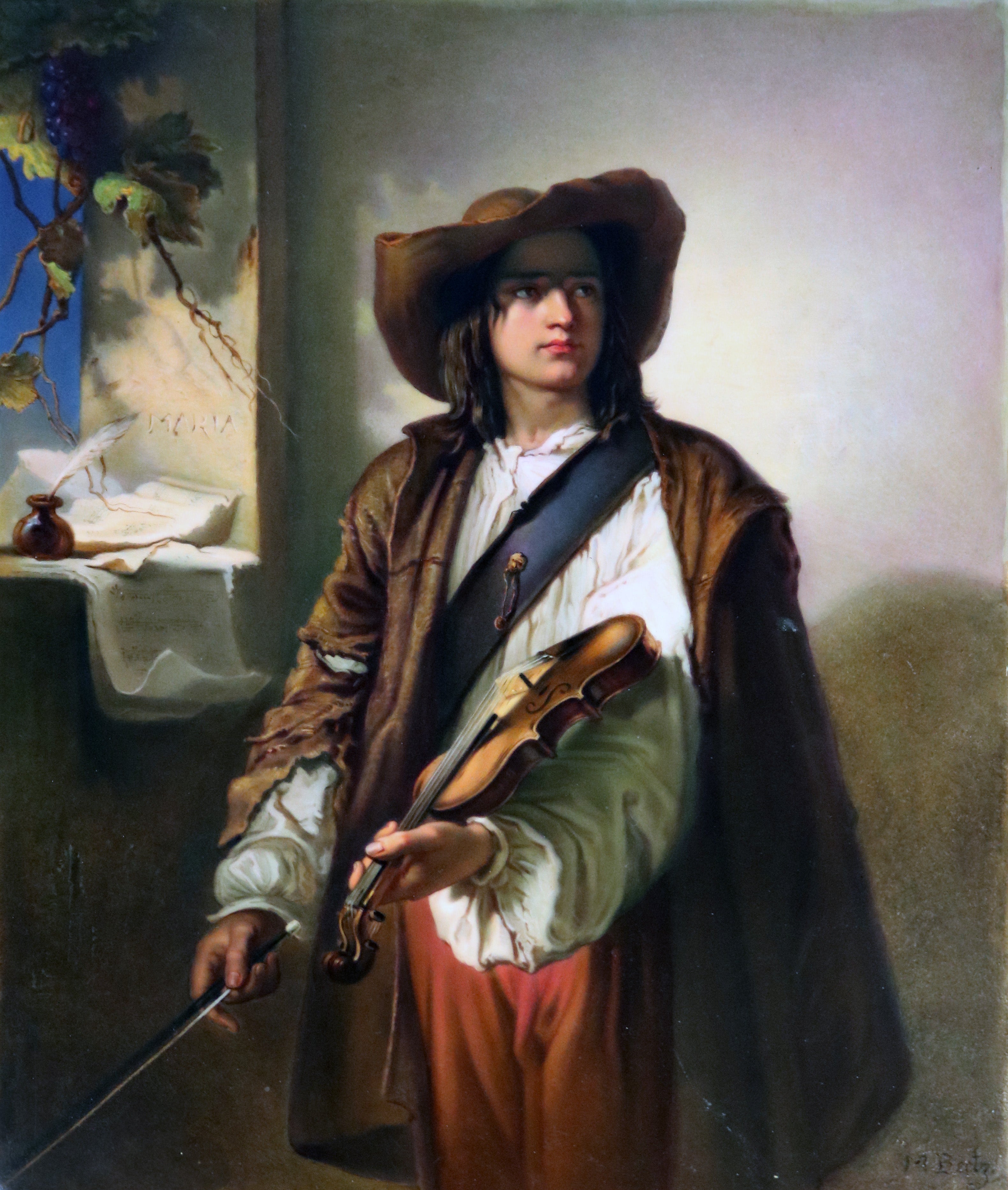
About the Seller
4.9
Platinum Seller
These expertly vetted sellers are 1stDibs' most experienced sellers and are rated highest by our customers.
1stDibs seller since 2016
2,392 sales on 1stDibs
Typical response time: 5 hours
- ShippingRetrieving quote...Ships From: Big Flats, NY
- Return PolicyA return for this item may be initiated within 7 days of delivery.
More From This SellerView All
- Antique Japanese Meiji Satsuma Hand Painted & Gilt Porcelain Vase C1910Located in Big Flats, NYAntique Japanese Meiji Satsuma Hand Painted & Gilt Porcelain Vase with Flowers, Butterfly & Bamboo, C1910 Measures- 8.75''H x 4.5''W x 4.5''DCategory
Early 20th Century Asian Meiji Ceramics
MaterialsPorcelain
- Antique Satsuma Meiji Porcelain Bottle Vase Hand Painted & Gilt Figures c1910Located in Big Flats, NYAn antique Satsuma Meiji bottle vase offers porcelain construction with hand painted and gilt genre scenes having figures throughout, c1910 Measures - 8...Category
Early 20th Century Asian Ceramics
MaterialsPottery
- Antique Japanese Satsuma Meiji Floral & Gilt Decorated Porcelain Vase C1910Located in Big Flats, NYAntique Japanese Satsuma Meiji Hand Painted Floral & Gilt Decorated Porcelain Vase C1910 Measures - 10.25"H x 3.5"W x 3.5"DCategory
Early 20th Century Japanese Porcelain
MaterialsPorcelain
- Antique Japanese Meiji Satsuma Porcelain Vase, Garden Scene & Pheasant, C1910Located in Big Flats, NYAntique Japanese Meiji Satsuma Porcelain Vase, Garden Scene & Pheasant, C1910 Measures- 6.25''H x 3''W x 3''DCategory
Early 20th Century Japanese Meiji Vases
MaterialsPorcelain
- Antique Japanese Satsuma Meiji Pottery Bottle Vase C1910Located in Big Flats, NYAn antique Japanese Satsuma Meiji bottle vase offers porcelain construction with flanking bamboo form handles, hand gilt and painted floral, fol...Category
Early 20th Century Asian Meiji Vases
MaterialsPottery
- Antique Japanese Porcelain Enameled Vase, Garden &Scene Pheasant C1910Located in Big Flats, NYAntique Japanese Porcelain Enameled Vase, Garden &Scene Pheasant, Made in Japan, C1910 Measures- 10.75''H x 6.25''W x 6.25''DCategory
Early 20th Century Japanese Ceramics
MaterialsPorcelain
You May Also Like
- Antique Japanese Meiji Satsuma Painted VaseBy SatsumaLocated in LA CIOTAT, FRA petite and beautiful hand-decorated ceramic baluster vase, painted all around with traditional Japanese motifs, including native flora, birds and bamboo stems on a creamy glazed background. The colour palette is bold and bright, with highlights of green, red and blue, together with plentiful gilt relief...Category
Antique 19th Century Japanese Meiji Ceramics
MaterialsCeramic
- Japanese Meiji Satsuma Polygonal VaseBy Kyoto PotteryLocated in Gainesville, FLJapanese Meiji Satsuma polygonal vase with four panels. Each panel shows a different scene. Fine gilding and hand enameling. Marked on the bottom with shimadzu mon.Category
Antique Late 19th Century Asian Meiji Ceramics
MaterialsPottery
- Japanese Meiji Satsuma Vase in Lacquered Porcelain with Golden Fish MotifLocated in New York, NYJapanese Meiji period Satsuma vase in lacquered porcelain with decorative gold fish and red coral motif. The piece was made in circa 1900 and has marks on the bottom. In great vintag...Category
Antique Early 1900s Japanese Meiji Ceramics
MaterialsPorcelain
- Antique 19th C Meiji Japanese Satsuma Vase with Marked BaseLocated in Amsterdam, Noord HollandA miniature Japanese Satsuma vase, Meiji Period. Incredible and very detailed piece. Just superb. Marked: ?? "Setsuzan". Condition Neck has been restored. Size 88 x 52mm H ...Category
Antique 19th Century Japanese Meiji Ceramics
MaterialsPorcelain
- Japanese Satsuma Vase Yabu Meizan MeijiBy Yabu MeizanLocated in Atlanta, GAA Satsuma baluster form vase from the studio of Yabu Meizan (birth name Yabu Masashichi; 1853-1934), who is one of the most celebrated and collectible Satsuma artists from Meiji Peri...Category
Early 20th Century Japanese Meiji Ceramics
MaterialsCeramic
- Antique Japanese Meiji Era Porcelain Satsuma Figural Kutani Vase Fu Dogs GeishaLocated in Dayton, OH"Late Meiji era Kutani vase, circa 1903. A beautiful porcelain blue ground centered by an intricate Geisha flanked by gold figural Foo Dog handles. Features a floral and foliat motif throughout. Signed along the base. Kutani ware, Japanese porcelain made in Kaga province (now in Ishikawa prefecture). The name “Old Kutani” refers to porcelain decorated with heavily applied overglaze enamels and produced in the Kaga mountain village of Kutani. The powerful Maeda family had established a kiln there by 1656. The clay bodies used were gray and coarse-grained. On most pieces—dishes and bowls were especially common—a white or blue-white matte glaze was decorated in dark, restrained colours, initially greens, yellows, and some reds, and later purples and dark blues. Some items had cobalt blue decoration under a white glaze. The most noted Old Kutani pieces are “Green Kutani,” in which most of the surface is covered in a green or blue-green glaze to which one or two colours have been added (or the glaze is applied evenly over a design executed in black). The bold designs of Kutani ware drew freely from Chinese ceramics, paintings, and textiles. They are renowned for their rich pictorial ornament executed in lively, intense lines. Owing to local financial problems and difficulties in obtaining the necessary pigments, the Kutani kiln was abandoned some time in the Genroku period (1688–1704). Ceramics production in Kaga enjoyed a renaissance early in the 19th century, however, including the establishment of another kiln at Kutani in the 1820s. In addition to a revival of the styles of Old Kutani ware, there arose a style using gold on a coral-red ground, which was perfected during another spate of activity that began in the 1860s. Technical advances were made and Western-style pigments were adopted, and by the 1890s modern Kutani...Category
Antique Early 1900s Meiji Vases
MaterialsPorcelain
Recently Viewed
View AllMore Ways To Browse
Antique Korean Joseon Dynasty
Flying Colors Ceramic
Chinese Bleu Poudre
Satsuma Birds
Italian Sedar
Kinkozan Zo
Japanese Vase Pain
Imari Scalloped Charger
Bamboo Censer
Philippine Pottery
1940s Mahogany
Industrial Outdoor Furniture
Deco Textiles
Italian Brass And Marble Dining Table
Plant Lighting
1960s Danish Modern Coffee Table
Antique Art Deco Chinese Carpet
Welded Metal Table

